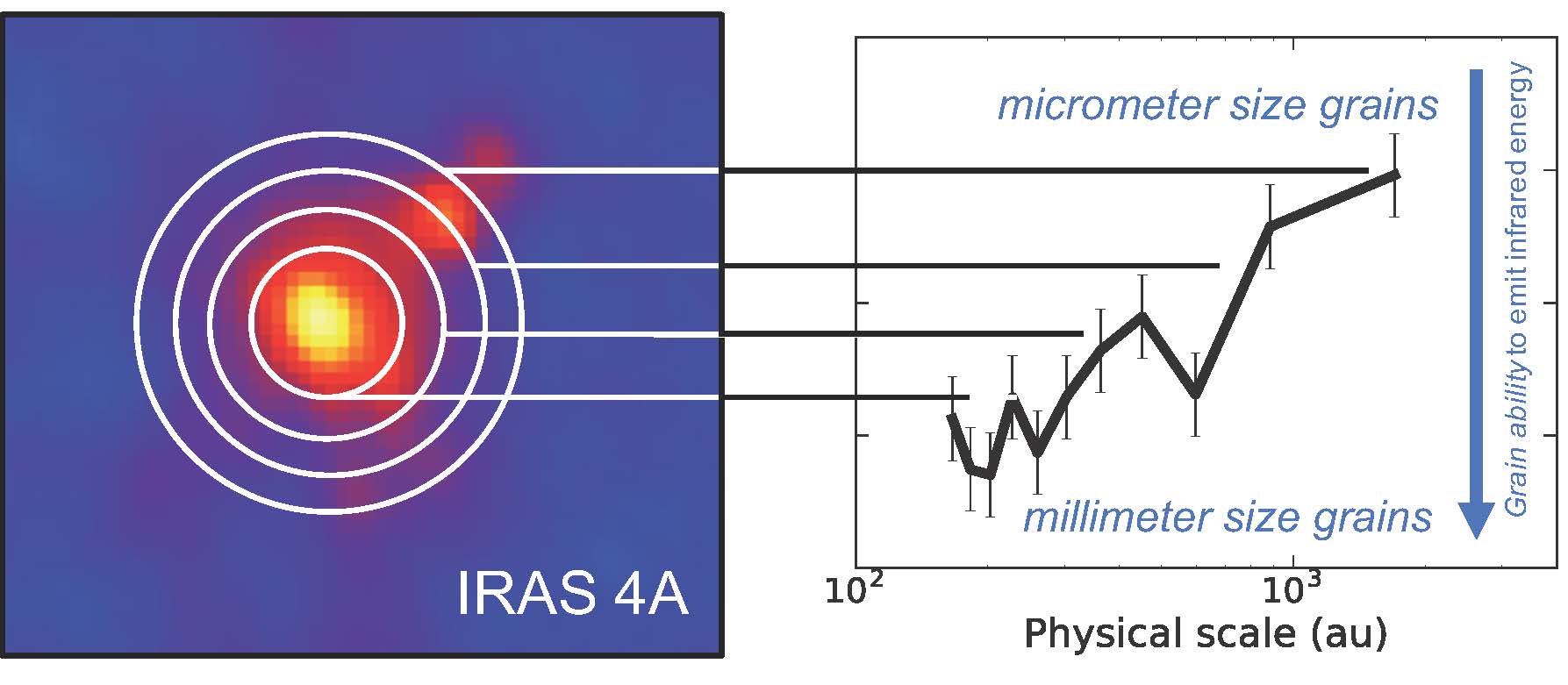News
A revised timeline for planetary formation? Sounding the cosmic dust around young stars
 |
| Artist's concept of a young star surrounded by a dusty protoplanetary disk. Credits: NASA/JPL-Caltech/R. Hurt (SSC/Caltech) |
An international team led by researchers from the CEA Paris-Saclay Astrophysics Department (DAp) has probed for the first time the dust envelopes surrounding stars in formation (so-called Class 0 protostars) thanks to the large interferometer NOEMA. Surprisingly, the researchers discovered the presence of large grains whose size grows as one gets closer to the central star. The presence of such large grains, formed only a few 10000 years after the beginning of the gravitational collapse of the molecular cloud from which the star will form, is completely unexpected. These are most likely the building blocks from which planets will be assembled in later evolutionary stages of the star formation process. The results of this study, which are published in Astronomy & Astrophysics, could thus call for a major revision of the timeline and timescales to form planets.
Cosmic dust, the material to build planets
How do dust grains in dense gas clouds grow to become the building blocks by which ultimately planets will form? The answer to this highly debated question has not been established yet, mostly because of observational challenges. Indeed, even if these regions can reach sizes of several hundred billion kilometers, a few 10000 times the Sun-Earth distance, their distance is so large that they appear extremely small from Earth. Moreover, the temperature of the dust grains is so low that observations can only be performed beyond the infrared, in the so-called (sub)millimeter regime. Only cutting-edge interferometers like NOEMA and ALMA provide the capability to peer through the collapsing cloud and probe the physical properties of the dust particles orbiting around the star embryo. To conduct such study the team led by Maud Galametz and Anaelle Maury used the large NOEMA interferometer to study a sample of 12 forming stars from the CALYPSO sample.
Dust grains larger than expected
The results of the survey show that the efficiency by which the dust grains radiate is much lower than expected, and that it decreases with the size of the dust grains. Such low values are a clear sign of the presence of large (> 100 micrometer size) grains in the star forming regions. The results also show that the closer the dust particles are to the star, the larger their size. These findings are consistent with theoretical predictions derived from models of polarized emission from dust grains performed by the same team.
Recent observations with the ALMA interferometer also suggest that first planets could already be present around young stars, aged only a million year. There is hence a thread of hints that the formation of the pebbles, from which planets will form, might occur much earlier than previously thought.
Nevertheless, the fact that grain growth could have progressed so fast, in less than 0.1 million years after the onset of the star formation process, is not accounted for by the team’s theoretical models. These results could call for a revised timeline for planet formation, or at minima severely question current understanding of the sequential evolution of dust and gas particles to form planets.
 |
|
Left: In the heart of the NGC1333 star forming region, the protostar IRAS 4A observed at 1mm with the Plateau de Bure Interferometer (now NOEMA). Right: Variation of the dust grain size in the IRAS 4A protostellar envelope as a function of the distance to the star. The data suggest that dust grains grow toward the center but are generally large throughout the envelope in spite of the youth of the object (Credit: Galametz et al. 2019) |
More information:
Article: "Low dust emissivities and radial variations in the envelopes of Class 0 protostars: a signature of early grain growth?" M. Galametz, A. J. Maury, V. Valdivia, L. Testi, A. Belloche, Ph. André; Astronomy & Astrophysics (in press), 2019
Contact:
Maud Galametz
CEA, Département d'Astrophysique
Tel : +33 1 69 08 62 00



